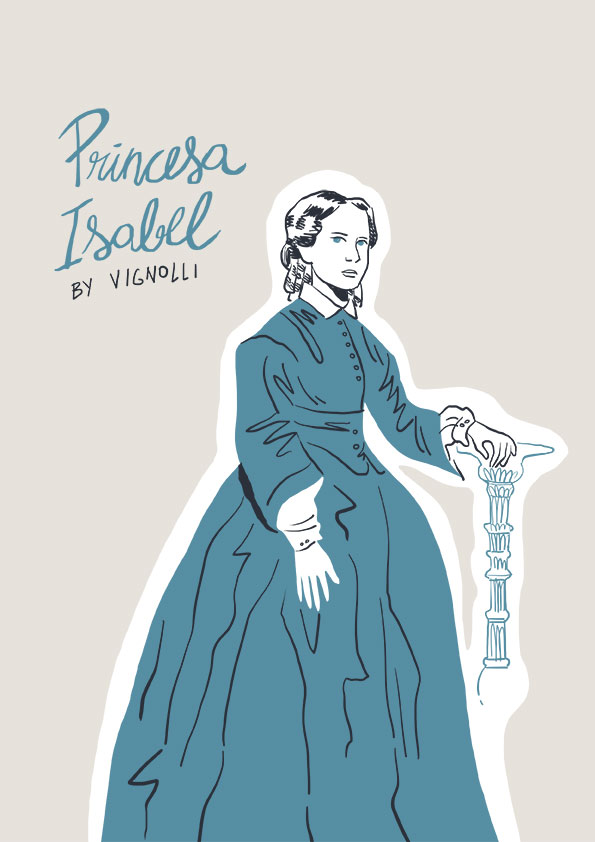My wife used to say I drew women very badly. The problem was, in my childhood I read way too many superhero comics.  And they were mostly guys, so I haven’t never sketched the female figure enough.
I decided to correct this mistake by drawing more women.
It was about a month ago, I began to draw a series of illustrations to pay homage to Brazilian women. And so, to give value to the most charming part of our history.
ANITA GARIBALDI (1821-1849)
The “Heroine of Two Worlds”. She received this title for having participated in Brazil and Italy, along with her husband Giuseppe Garibaldi, of several battles. He fought in the Farroupilha Revolution, in the Battle of Curitibanos and in the Battle of Gianicolo, Italy.

Isabel, Princess Imperial of Brazil (1846 -1921)
Isabel signed a law, named Lei Ãurea or the Golden Law, emancipating all slaves in the country.

Maria Quitéria (1792–1853)
Maria was a Brazilian lieutenant and national heroine. She served in the Brazilian War of Independence in 1822–23 dressed as a man. She has been called “Brazilian Joan of Arc,”and has become a kind of national legendary figure. Quitéria was the first woman to serve in a military unit in Brazil.

Maria Esther Bueno
Maria is a former Brazilian tennis player. She was the year-end number-one ranked female player four times and was known for her graceful style of play. Bueno became the first woman ever to win all four Grand Slam double titles in one year.

CLARICE LISPECTOR (1920 – 1977)
Clarice Lispector was a Brazilian writer acclaimed internationally for her innovative novels and short stories. The American writer Benjamin Moser describes Lispector as the most important Jewish writer in the world since Kafka.
